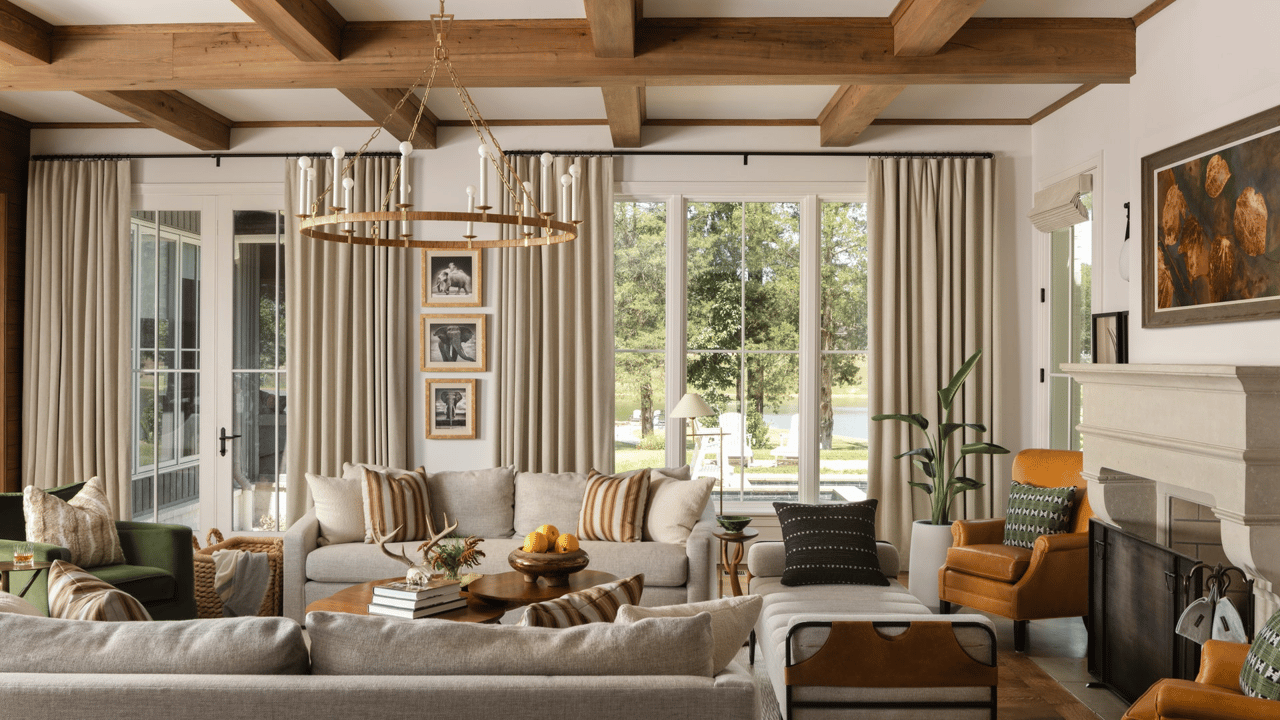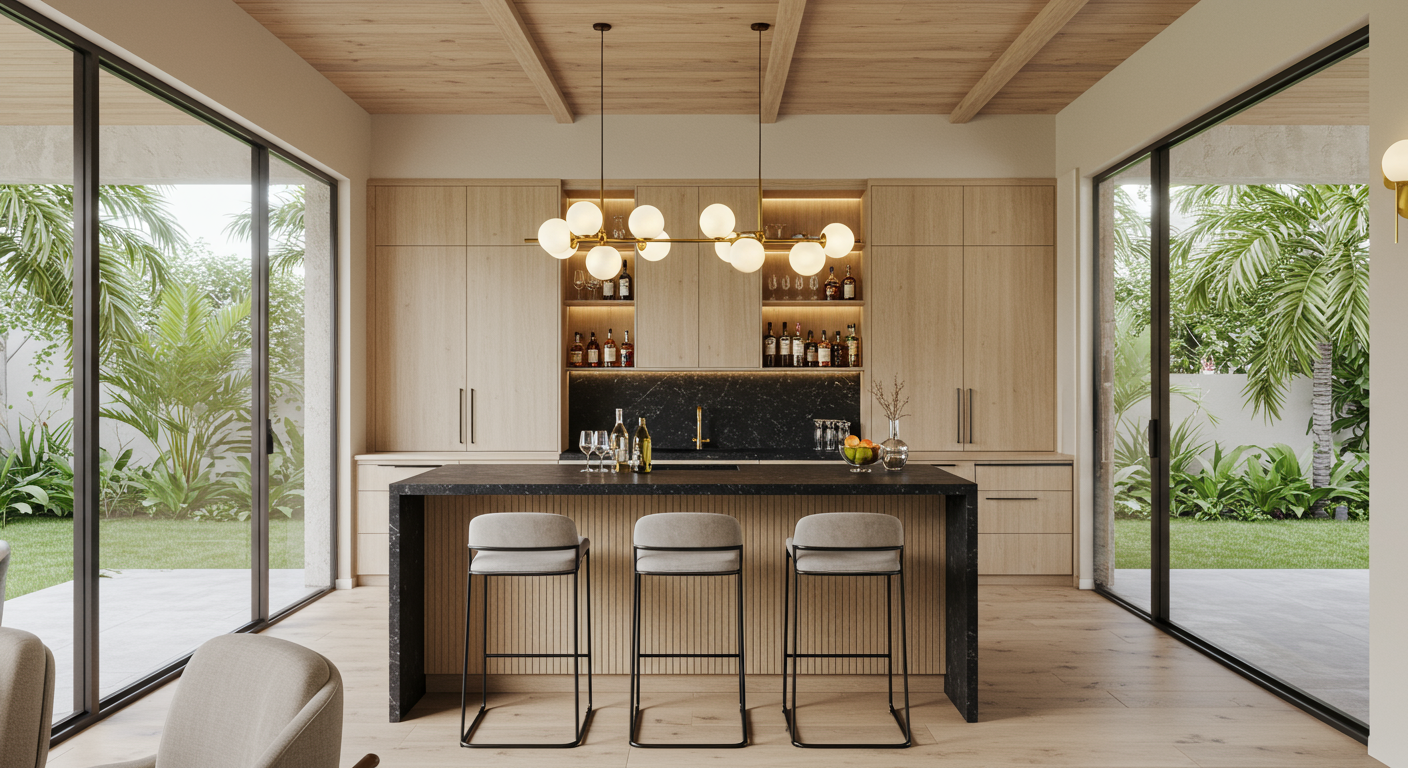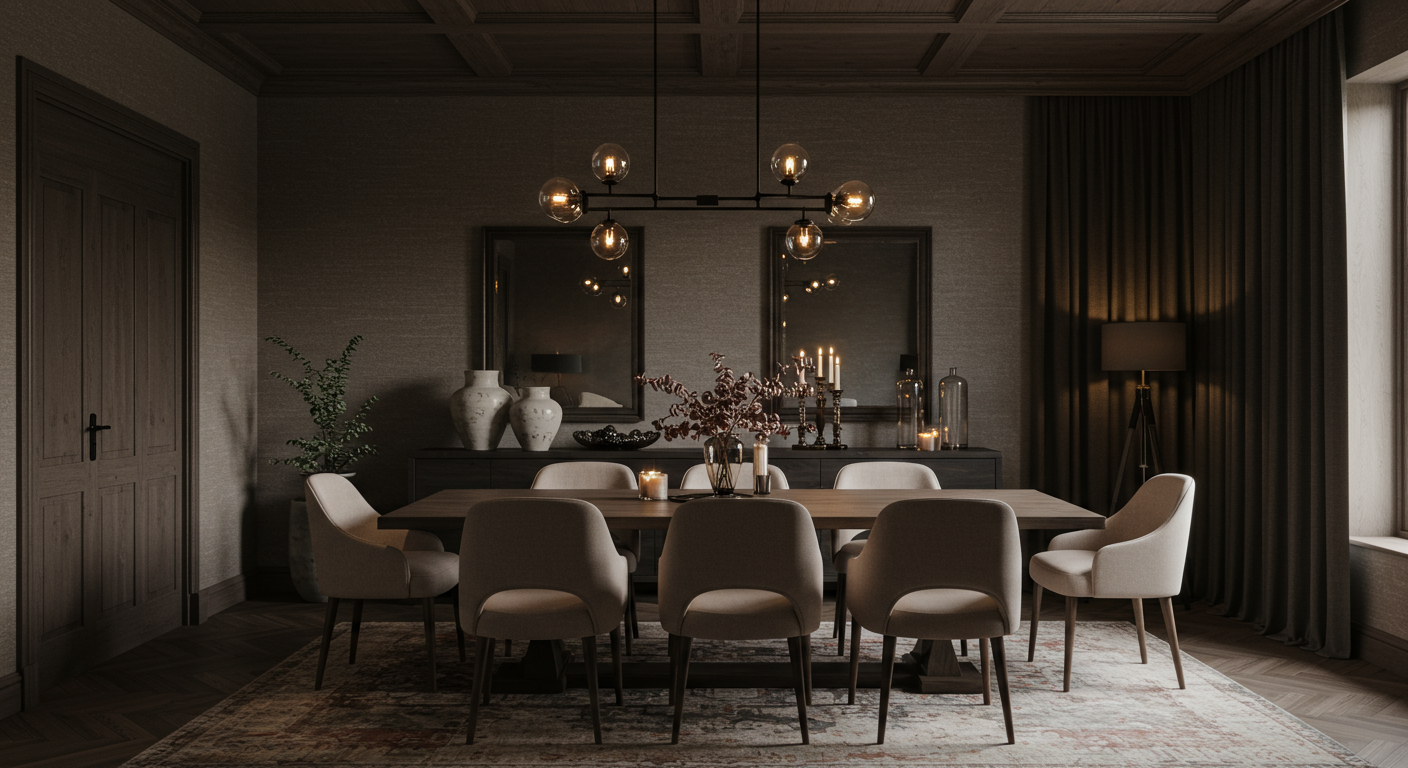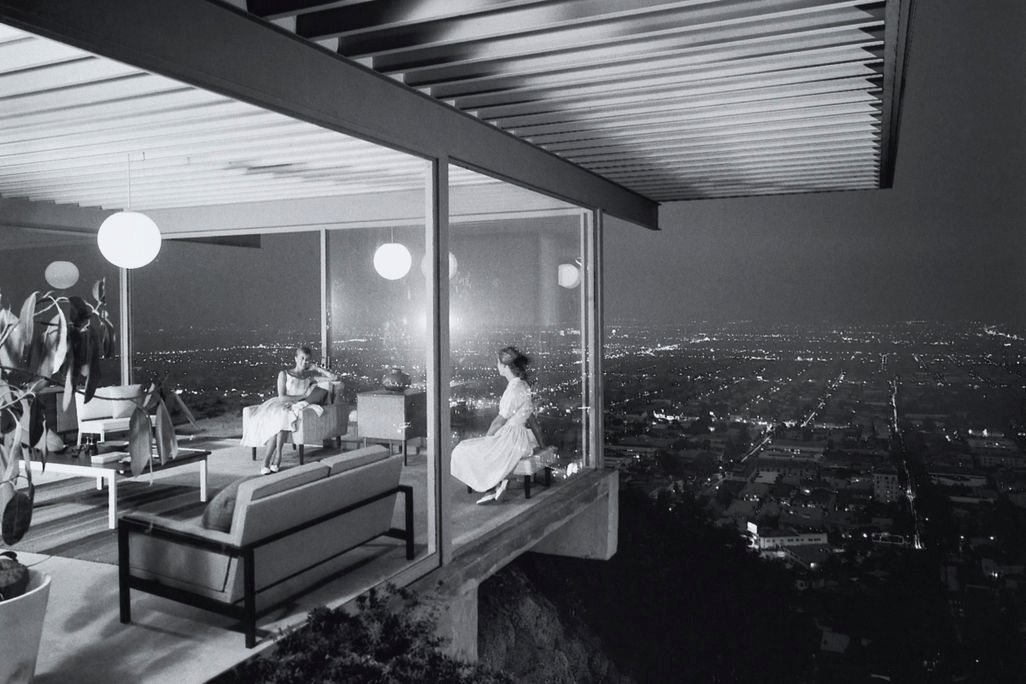Here’s a coffered ceiling disclaimer: They may cause an overwhelming desire to dress in formalwear—even for a night in. Interior designer Joyce Huston of Decorilla recalls a coffered ceiling installation where that was precisely the case. “We went for a classic square pattern with deep coffers, and I swear, it felt like we’d transported the room back to the height of 19th-century elegance,” she says. “The husband joked that he felt like he should start wearing a smoking jacket and speaking with a British accent!”
Though Huston’s client leaned into 19th-century grandeur, he wouldn’t have been wrong to reach even farther back—as in ancient Rome or Egypt. “Historically, coffered ceilings have roots in classical Greek and Roman architecture,” says Juliana Cone of Lamont Bros. Design & Construction in Portland, Oregon. “They’ve been a staple in traditional design styles for centuries. But more recently, I’ve seen them adapted in modern homes, with drywall coffers or stepped designs that give a fresh twist on the traditional grid.”
Will a coffered ceiling work for your home? And how can you make it happen? Design pros explain it all in our handy guide below.
What are coffered ceilings?
Like wainscoting and crown molding, coffers add architectural detail and visual interest. “A coffered ceiling is essentially a grid pattern in the ceiling which is typically recessed,” says Colleen Bennett of CBB Design Firm in Morganton, North Carolina. “It’s used as a way of making the ceiling taller and enables you to create some depth.”
While the grid pattern typically consists of a series of squares or rectangles, you’ll also see octagonal or triangular panels. And as Bennett points out, sometimes a central panel takes a unique form to highlight another decorative feature. “We recently did a ceiling with a rounded middle coffer to provide a focal point for a chandelier over a Steinway piano,” she says. The grid pattern is what differentiates a coffered ceiling from a tray ceiling, which would consist of one large indentation.
Are coffered ceilings still in style?
“Absolutely—coffered ceilings are timeless and versatile, seamlessly complementing both traditional and contemporary design styles,” says Veronica Sanders of Dallas-based Design with Veronica Sanders. “With modern materials and finishes, they’re a chic nod to classical design, and they also fitting effortlessly into minimalist and transitional spaces.”
In addition to an aesthetic appeal that never gets old, coffered ceilings provide more practical benefits as well. “They can reduce noise and echo in the room, and they can also be used to conceal structural elements like ceiling joists and beams,” says Joshua Zinder of Joshua Zinder Architecture + Design in Princeton, New Jersey. “If designed properly, [a coffered ceiling] can also provide channels for plumbing, electrical conduits, and other infrastructure.” And maybe even more importantly, they’re likely to increase a home’s resale value.
What rooms work best with a coffered ceiling?
“I like including coffered ceilings in living rooms and bedrooms,” says Olivia Westbrooks of Olivia Westbrooks Interiors in Atlanta. “We often focus on walls and floors in these spaces, but you spend a lot of time looking up in the bedroom and living room while resting, and coffered ceilings are a great way to add intrigue to another canvas.” As recessed panels can accentuate chandeliers, dining rooms are another preferred space. Intricate ceiling design can lend such formal rooms an even greater air of grandeur.
Bathrooms, on the other hand, might not be the best place for a coffered ceiling. As Bennett explains, they may be harder to clean. “You’ve got steam, you’ve got moisture, and you also want to kind of make those more cozy,” she says.
Speaking of cozier rooms, the size of a space is another element to consider before installing coffered ceilings. “In more compact rooms or spaces with lower ceilings, a coffered design might make the room appear cramped; however, if executed correctly, it can draw the eye upward and create a layered, visually captivating effect,” says Ivan Pineiro of Pimell Interiors in Las Vegas. Which brings us to the next question….
Does a coffered ceiling require a certain ceiling height?
Because coffered ceilings build out from sunken panels, they do require starting with a somewhat substantial ceiling height—as mentioned above, you wouldn’t want to make a low ceiling feel even more constricted. That’s why Emilie Munroe of San Francisco–based Studio Munroe says, “Coffers function best with at least a 10-foot-high ceiling. This allows the recessed sections in the space to be observed and ensures the beams don’t feel oppressive.”
That being said, not all coffered ceilings are identical. While a more rustic style crafted with thick wood beams might call for a 14-foot ceiling, a grid pattern made with drywall might be feasible with a nine-foot ceiling.
“The beauty of a coffered ceiling is that its definition is not [constricted] by how pronounced or deep each coffer may be, rather that the detail is there to some degree,” says London-based interior designer Christian Bense. “So while ceiling height doesn’t necessarily dictate having a coffered ceiling or not, the proportions of a room should dictate how pronounced these details are.” For example, Bense worked on an apartment with ceilings that were just under 10 feet, so he created a ceiling design with lattice moldings, which added a more subtle level change. “This design felt more appropriate for the room than a grid of deep coffers that you might find in a taller, statelier home,” he says.
Which design styles complement coffered ceilings?
Just because you have a modern home it doesn’t mean you can’t consider a coffered ceiling. They aren’t only for traditional or Craftsman abodes. Munroe says, “Our studio specializes in balancing traditional architecture with eclectic contemporary furnishings. Coffers work well in this setting as they bring the traditional detailing up into the fifth wall (or ceiling), creating a consistent architectural environment for a mix of furnishing styles to shine.”
To create a ceiling that matches your home’s overall aesthetic, consider materials, finishes, and moldings. Your grid can be crafted from wood, drywall, or metal, and the ceiling panels can be painted or wallpapered.
“Traditional styles will use more ornate coffers and detailed moldings, while simple beams and clean lines suit transitional interiors,” says Elizabeth Gullett of Elizabeth Gullett Interior Design in Memphis. “If the space is modern, then the coffering can be extremely minimalist, often with geometric shapes. For rustic interiors, mixing in exposed wood beams can add a casual warmth and texture to the space.”
Should you paint a coffered ceiling?
As mentioned, painting a coffered ceiling can add to the overall aesthetic. “The design options for coffered ceilings are essentially limitless,” says Claire Sá of architecture and interior design studio De Rosee Sa, based in London and Lisbon. “You can paint them in light and dark hues of the same color [as the surrounding walls] for a subtle contrast, or paint the panels or moldings in a bold color while keeping the other element in a neutral tone. Alternatively, you can paint both the panels and the moldings in the same tone for a more uniform design.” If you go with one color throughout, Munroe says, “Use a satin or gloss finish on the coffers to highlight their architecture against the matte sections.”
Beyond paint, stain is always an option for wood beams to create an organic appeal. Or take a cue from Westbrooks and consider wallpaper. “One of my favorite applications is to use wallpaper on the flat ceiling portion of the coffer for added texture and warmth,” she says.
Gullett has also gone the wallpaper route to amplify a ceiling design. “I used a leather wallpaper for the recessed panels in a library, and it was delicious!” she says. “I’ve also done grass cloth wallpaper on the recessed panels in a billiard room, with the seams in an X pattern to hide them. A high-gloss paint gives extra drama.”
Can you DIY a coffered ceiling?
Crafting a coffered ceiling on your own is certainly possible, but it’s not for the novice DIY’er. “Start with detailed planning—consider the room’s dimensions, ceiling height, and intended design,” Sanders advises. “Choose lightweight materials, like MDF, for easier installation, and measure meticulously. Even slight misalignments can become noticeable on a coffered grid.” Choosing a material that’s light enough and won’t overwhelm the ceiling is essential. Solid wood beams, for example, may be too heavy for some ceilings and would require structural reinforcement. If you’re unsure how the installation will affect the ceiling’s structural integrity, Sanders says to consult a professional.
Additionally, Gullett recommends doing as much work as you can preinstallation. “Paint or stain the beams and panels before installation for a cleaner finish,” she says. “Plus your arms get so tired working above your head, so anything you can do on the ground is much easier.”
Additional tips for coffered ceilings
“If you’ve got intricate flooring like herringbone wood or patterned tile, go simpler with the ceiling to avoid a visual clash,” says Rotem Eylor of Republic Floor in Montebello, California. “Traditional homes with hardwood or natural stone flooring work really well with coffered ceilings. Also, pairing them with slick tile floors or polished concrete can give you a clean, modern contrast that still feels elegant.”
“Before installing a coffered ceiling, consider several factors: How ornate would you like the design? Would you prefer stacked moldings or patterned panels within the recesses? Consider whether wood might add warmth to the space or if painting everything a dark color would create a moodier atmosphere. Do you want the ceiling to match the walls?” says Ali Ames of Dallas-based Lark Interiors. Alternatively, keeping the surrounding walls plain and painting the ceiling will make the architectural detail pop.
“If you have a coffered ceiling that you don’t love, I would suggest taking down any applied wood or molding and starting from the basic structure of the ceiling,” says Stephanie Mahaney of Stephanie Rae Interiors in Jupiter, Florida. “Depending on your style, you can also apply wood to the sunken area or to the grid to make it look like there are natural beams.”
“Integrated recessed lighting within each coffer creates a beautifully lit grid, accentuating the design,” Sanders says. LED lights with discrete fixtures work well with coffered ceilings. As for larger light fixtures such as chandeliers, homeowners should be sure to center them within the grid.
“If you’ve got an average height room and you can’t afford to drop the ceiling for coffering, my tweak on giving the idea of a coffered ceiling is to add molding (fretwork) onto the ceiling,” says LA-based interior designer Tracy Metro. “If you’re going to do this fake-out, it’s best to keep the molding detail profile minimal and paint it a light color. If you have a very tall ceiling, all bets are off. You can paint it a deep tone, have dark, exposed, natural wood or do a very 3D coffering and it won’t feel like it’s caving in on you.”
Originally published in Architectural Digest
Text by Amelia Mularz







